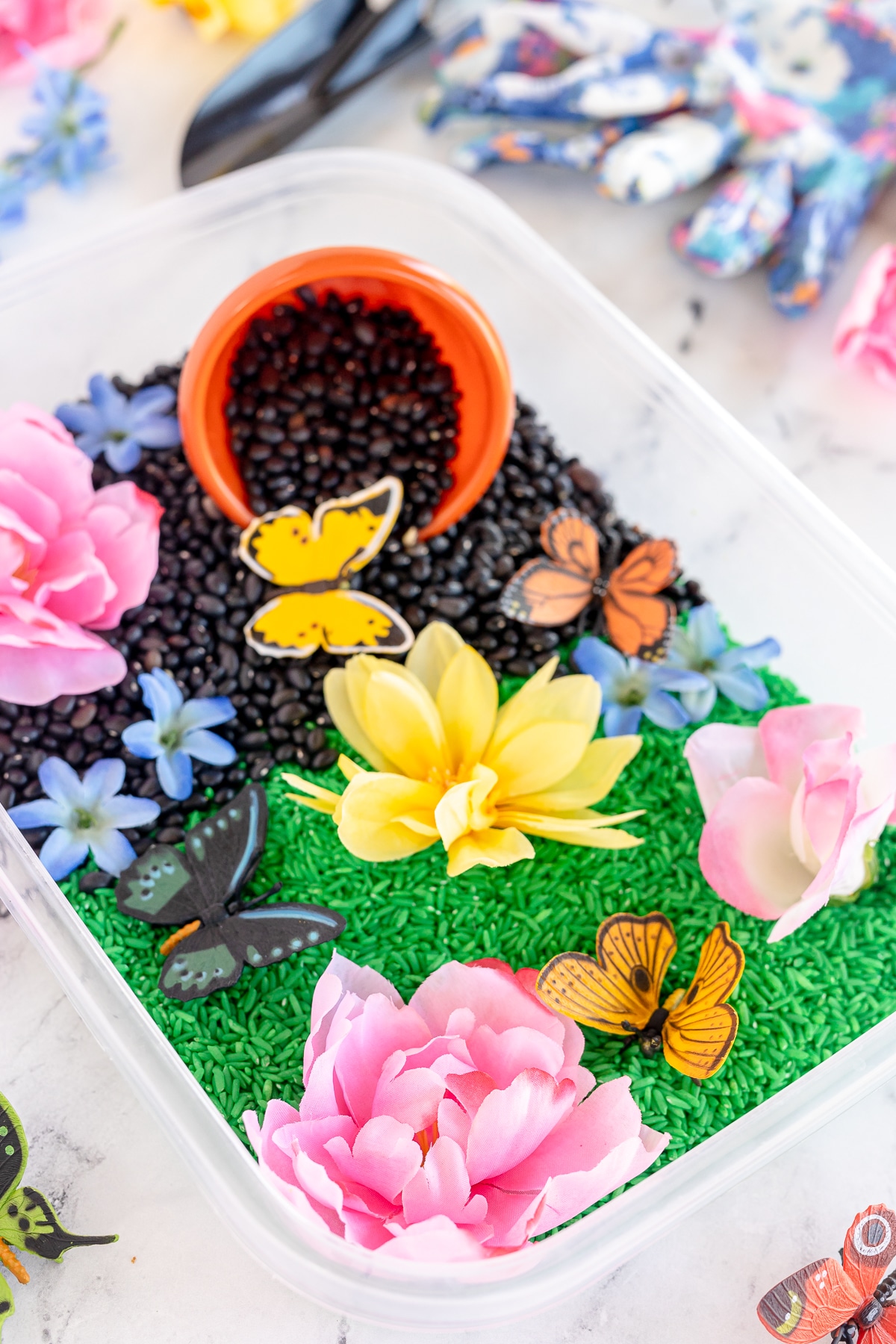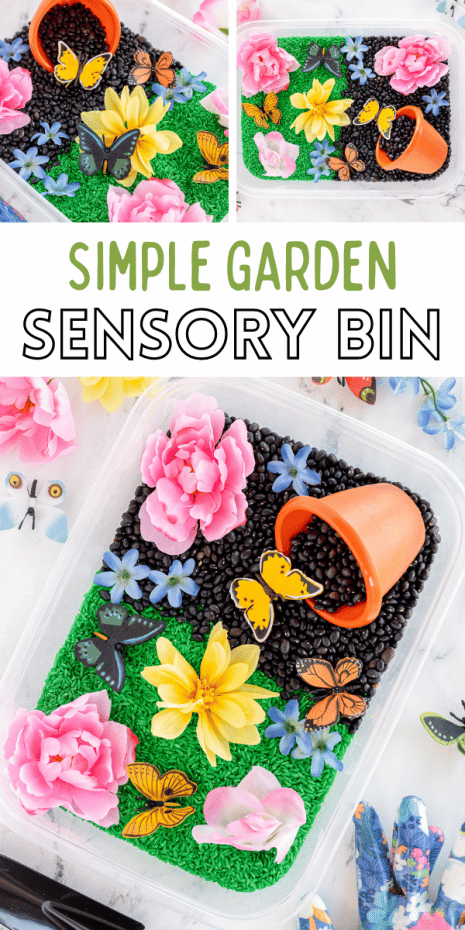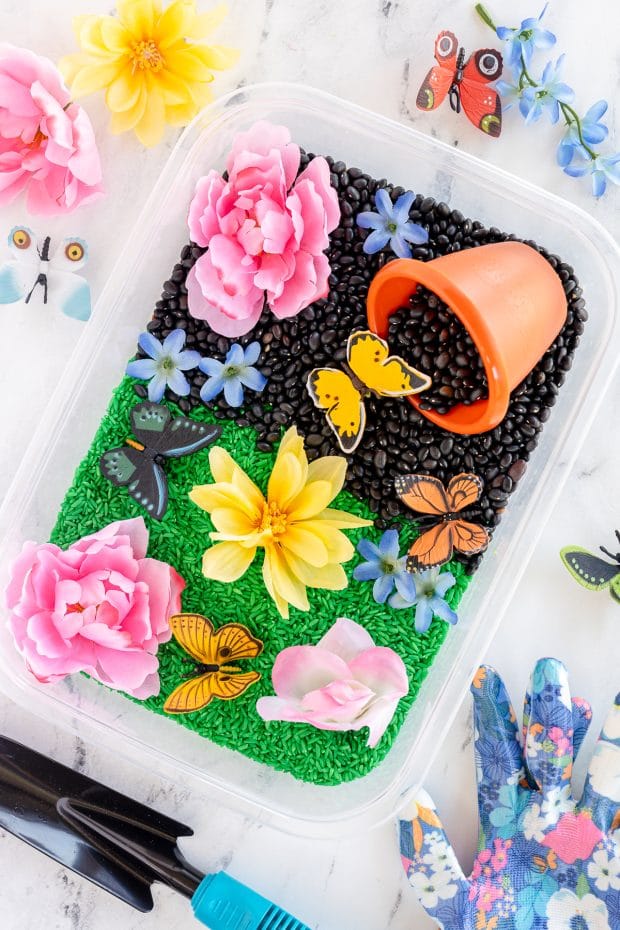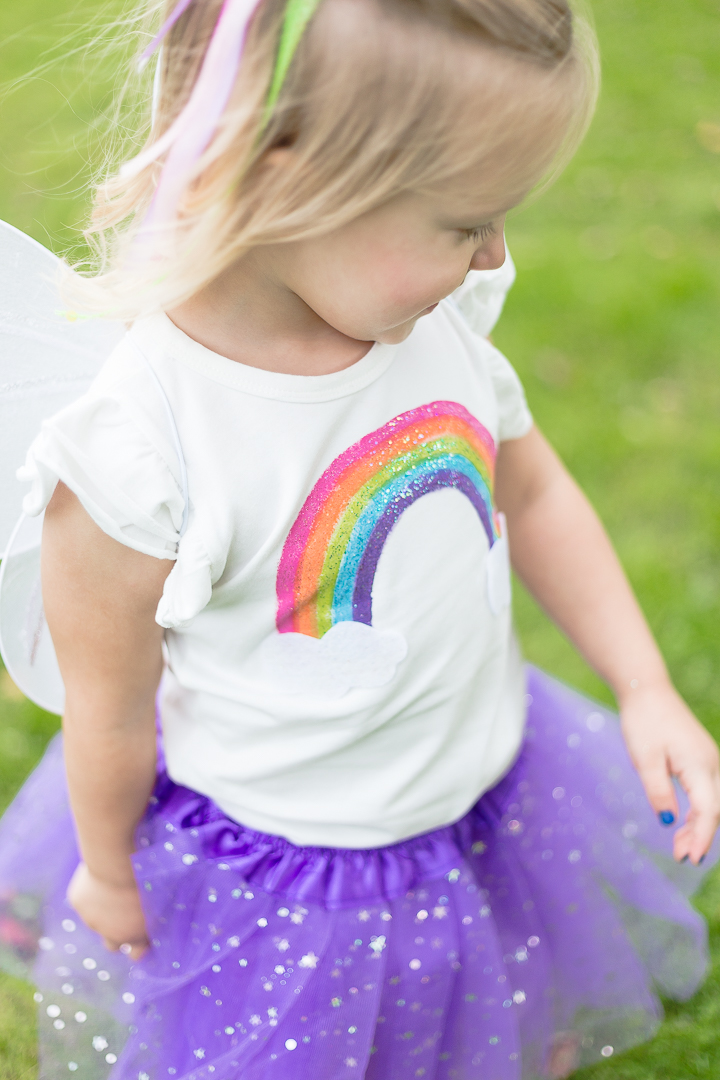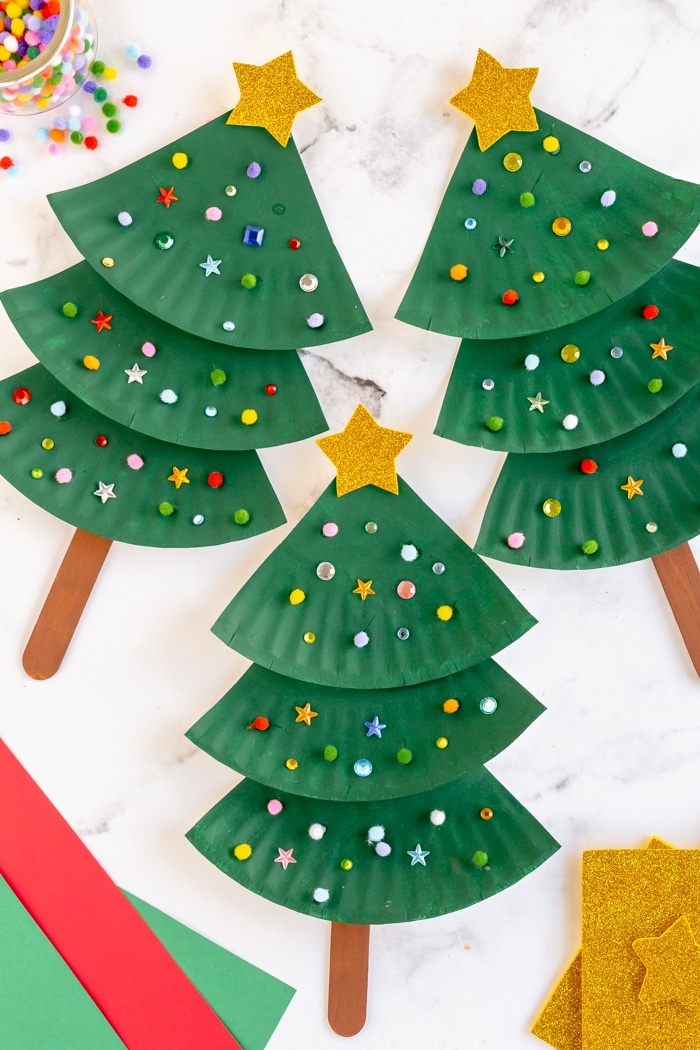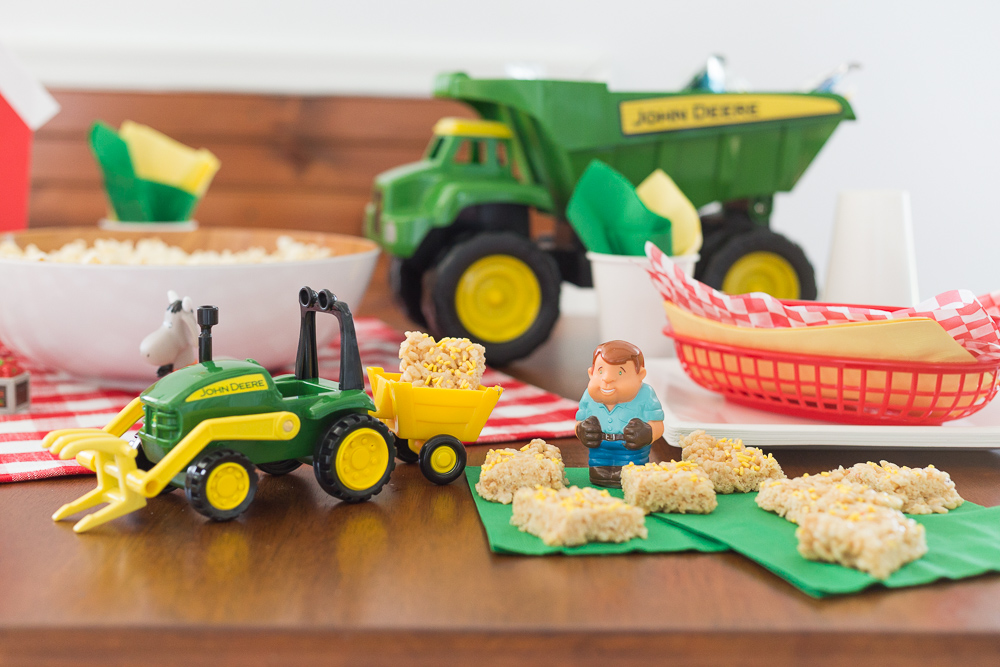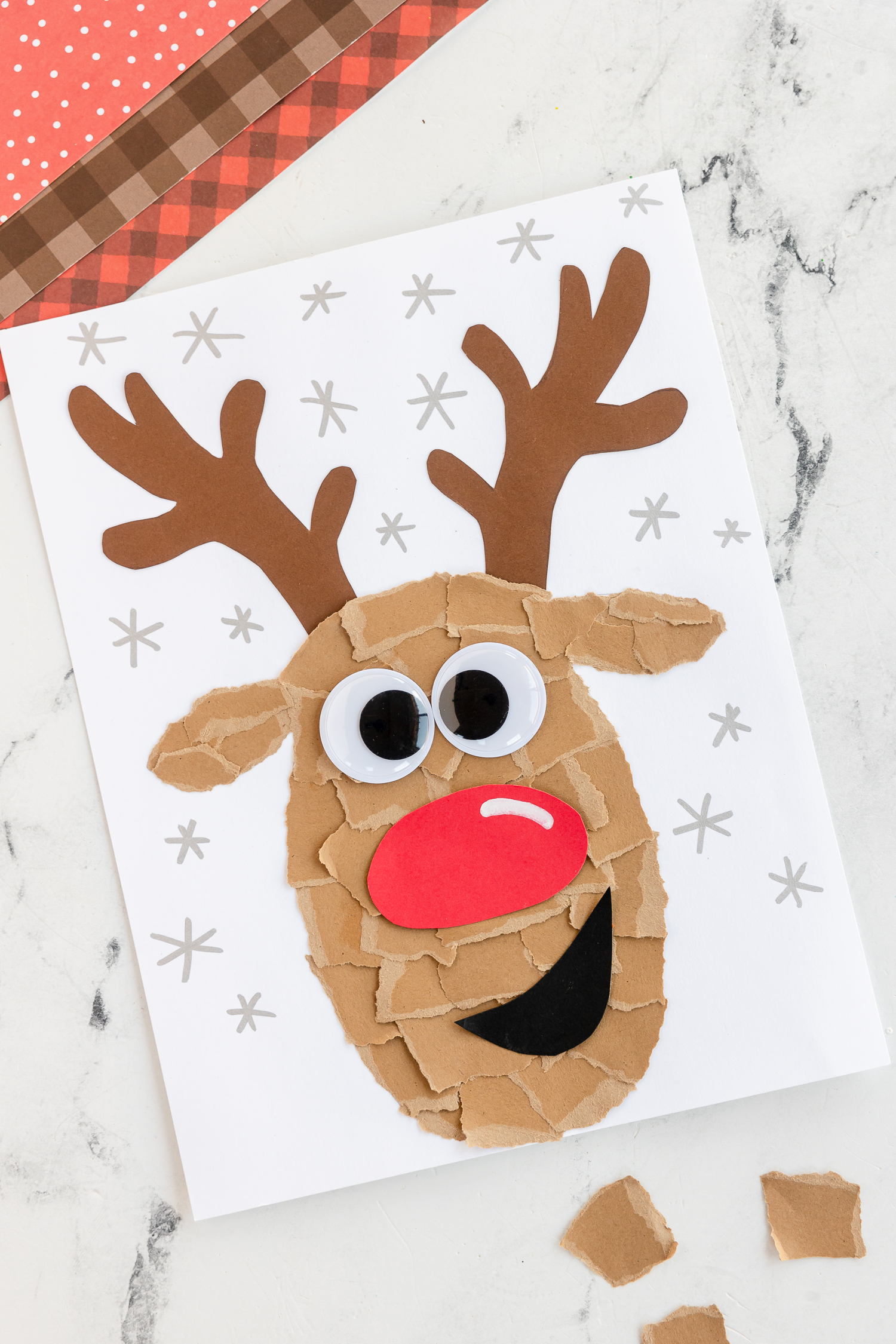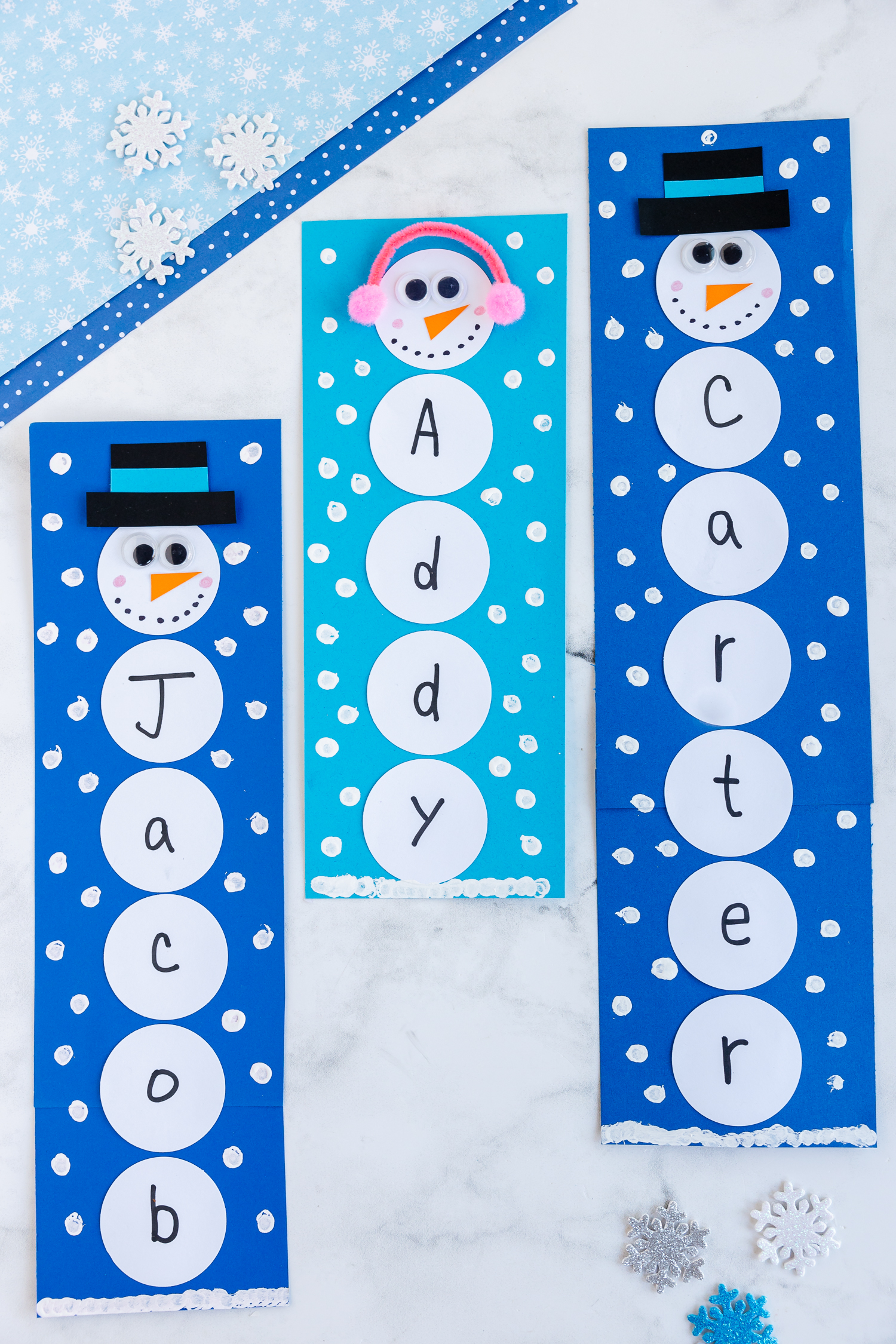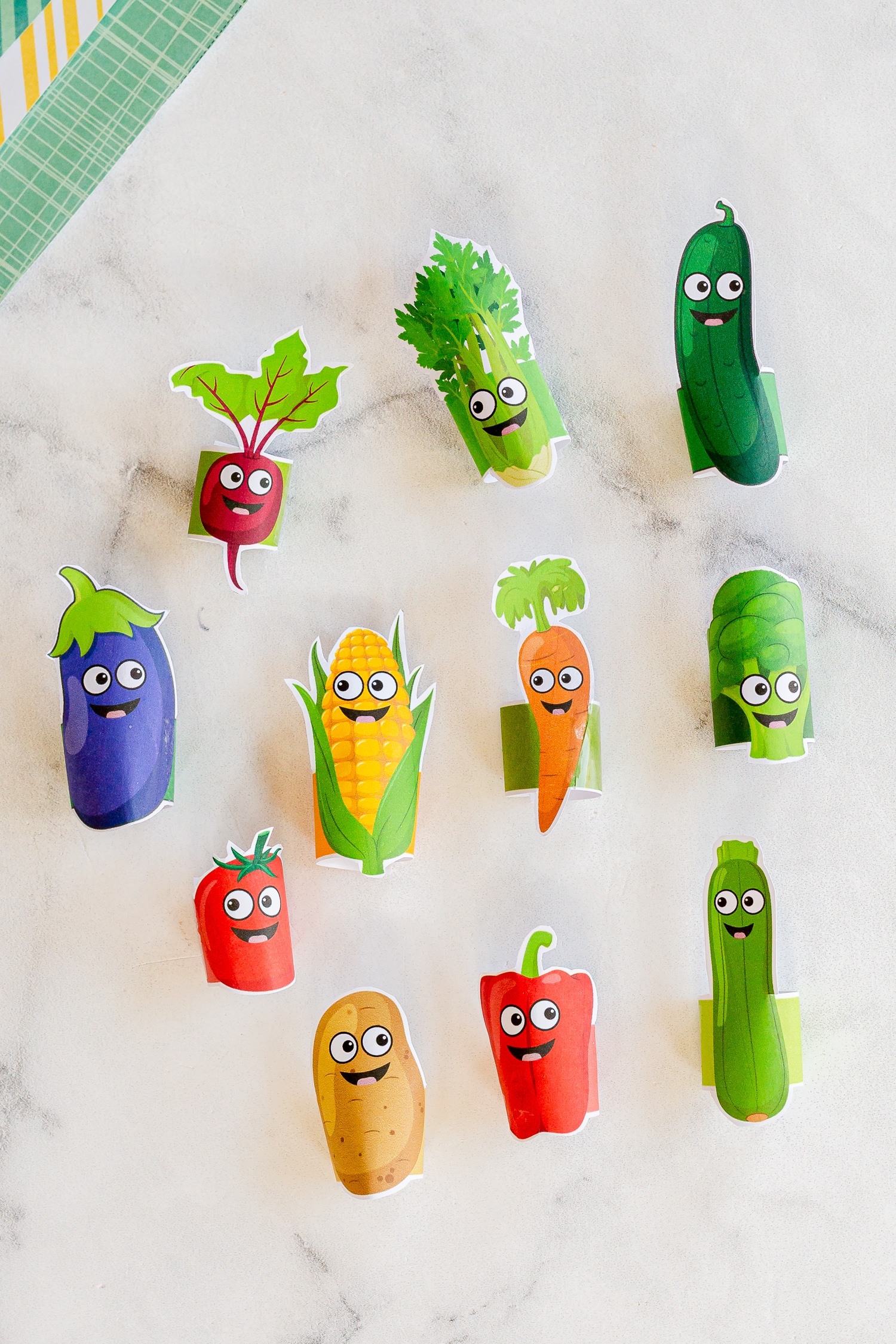Garden Sensory Bin
As an Amazon Associate I earn from qualifying purchases.
A garden sensory bin that kids will love to experiment with in the spring and summer. Perfect for kids ages three and up.
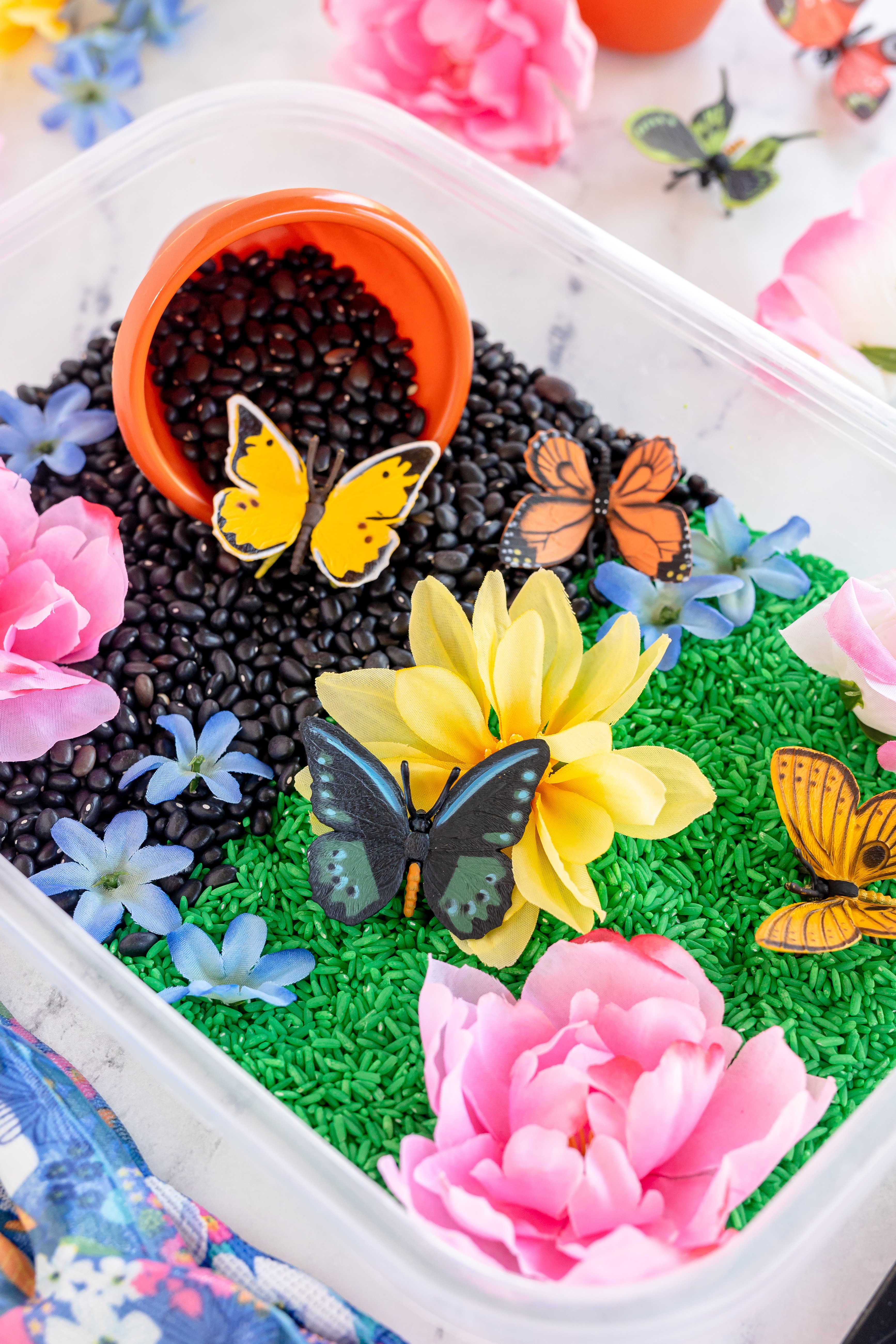
Sensory bins are extremely fun! They come with so many possibilities and the kids always adore them. We have made many over the years filled with all sorts of things. Some of the bins are best used outside, while others are great kept indoors for rainy days. I always make sure to include plenty of materials in the bins so the kids can get creative and explore what’s inside. These Garden Sensory Bins are wonderful to have around during the year for days that are too hot. Take a look at what I put inside these bins.
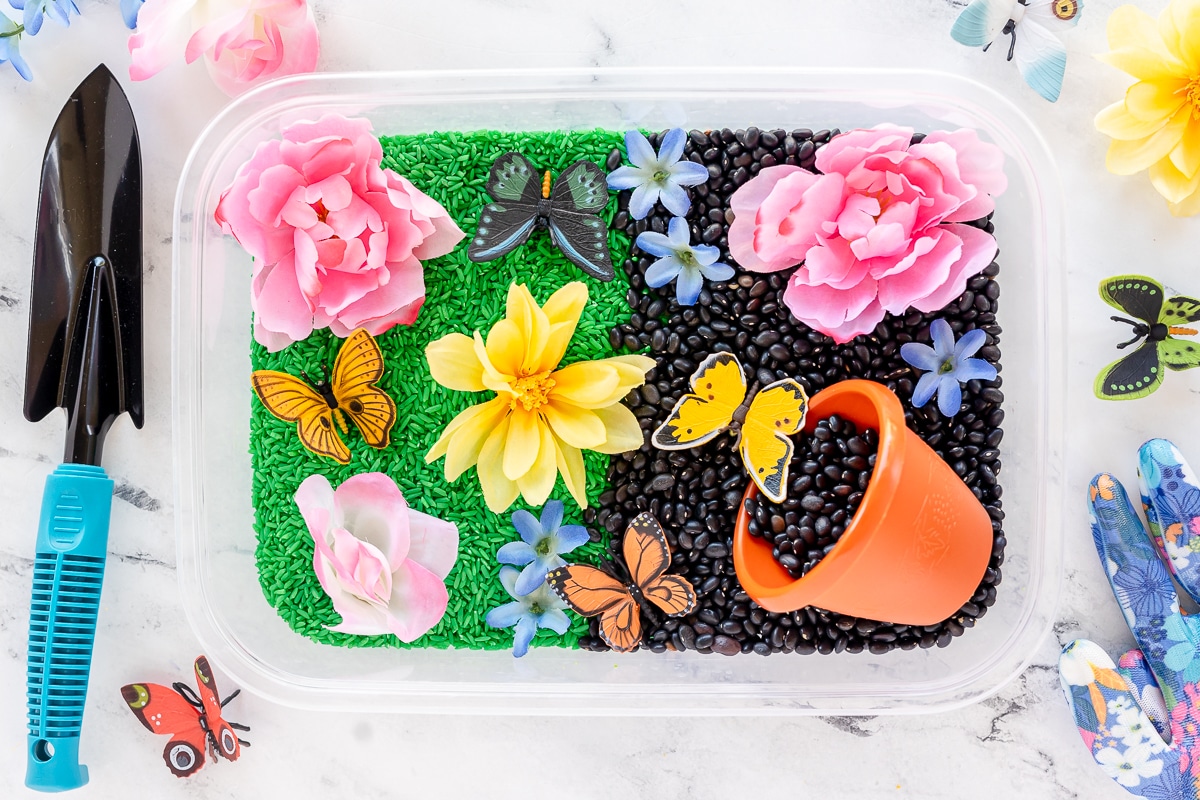
Supplies Needed for Your Garden Sensory Bin
When making this sensory bin, I thought about what kids might like to play with if they were sitting in a garden bed. I imagined there would be garden critters, flowers, and dirt. The sensory bin gives them a cleaner way to become little gardeners.
- Plastic Butterflies
- Green colored Rice
- Black Beans
- Fake Flowers
- Plastic terra cotta pot
- Garden gloves or shovel
- A bin to put it all in
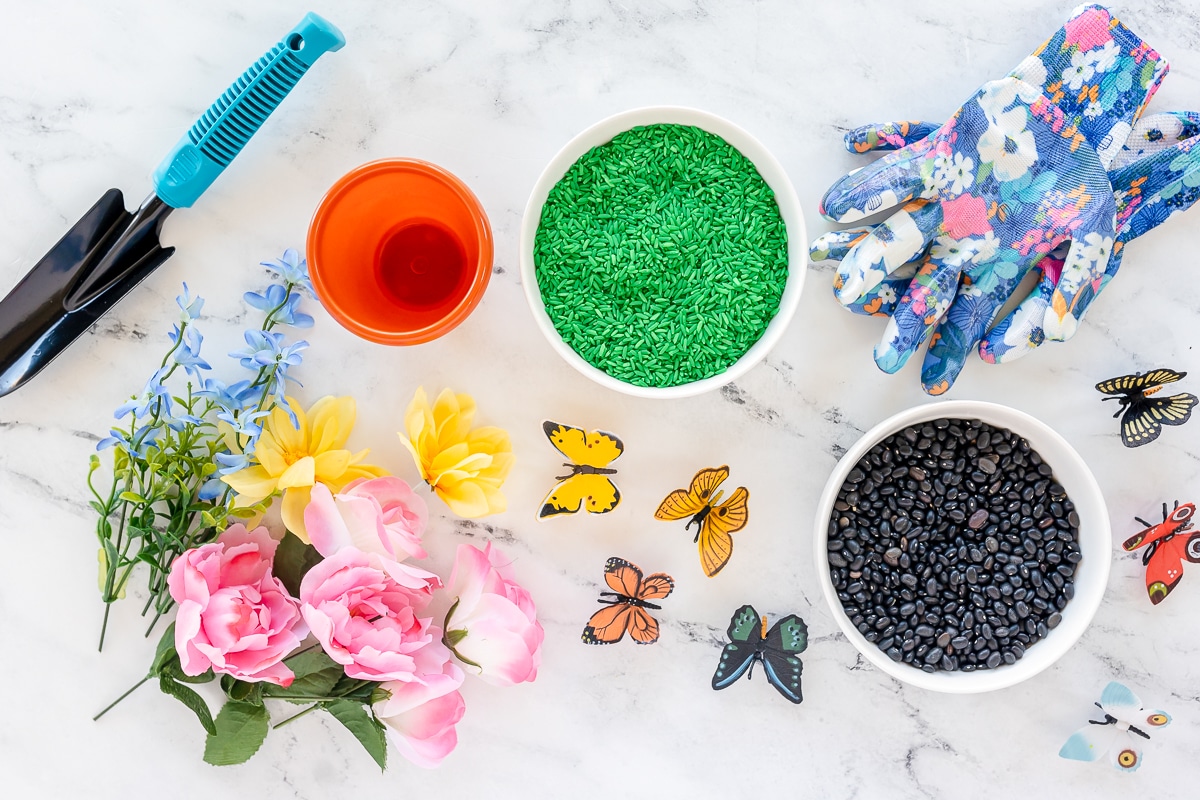
I got my flowers, pot, and garden gloves and shovel from the Dollar Tree. The terra cotta garden pot came in a little pack of four so multiple kids can use them in the sensory bin. They were also from the Dollar Store. The butterflies can be found online or in your local craft store. They often come in a pack with other insects and plastic critters. Another option for the artificial flowers is to use foam flowers!
I use bins from the Dollar Tree. There are tons of different sizes with lids. When we are done with the bin, we just pop the lid on and store them on the shelf in the closet. As long as the materials inside don’t get wet, they keep for a really long time! It’s fun to tuck them away after a week or so and break them out again after a few months.
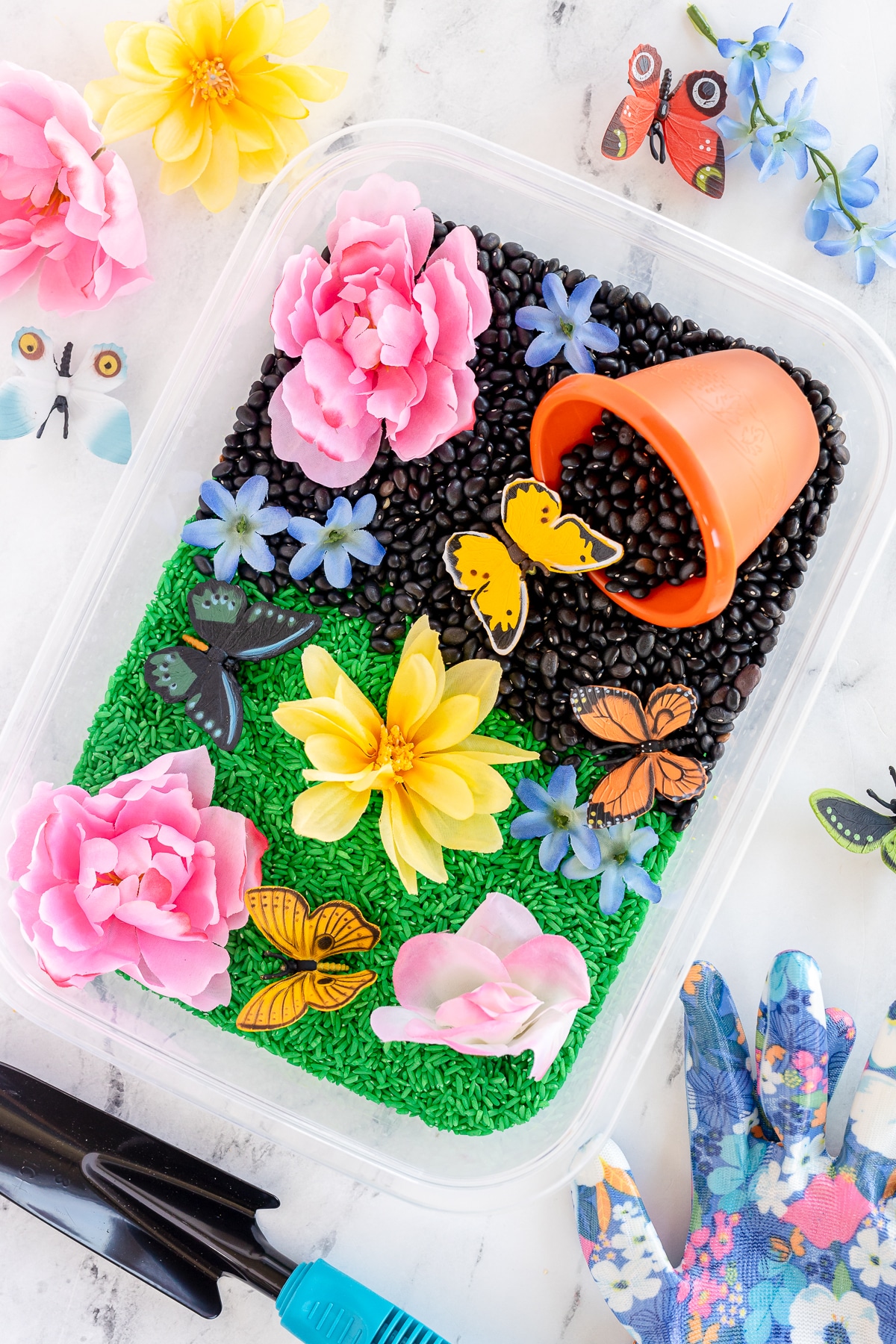
How to Assemble Your Garden Sensory Bin
To make this simple sensory bin, color your rice green to look like grass. You can follow these instructions for coloring rice. Once the rice is dry, dump it on one side of your bin. I used a piece of paper to hold the rice in place while I dumped the dry black beans into the other side. Now you should have the bottom of the bin full. Once side with beans and the other with rice.
Next, add your sensory objects. Place the butterflies, critters, tiny pots, and flowers on top of the beans and rice. Depending on how much room you have left, place the shovel and garden gloves inside as well. Otherwise, just give these materials to the kids when it’s time to play.
Now it’s time for the best part: letting the kids play with their new sensory tub. This tub is fantastic for sensory development, cognitive development, and even language development. We talk about how the objects feel and interact with one another. We also learn new vocabulary with any new objects they may have never seen before! It’s the perfect sensory bin for little ones in the spring and summer.
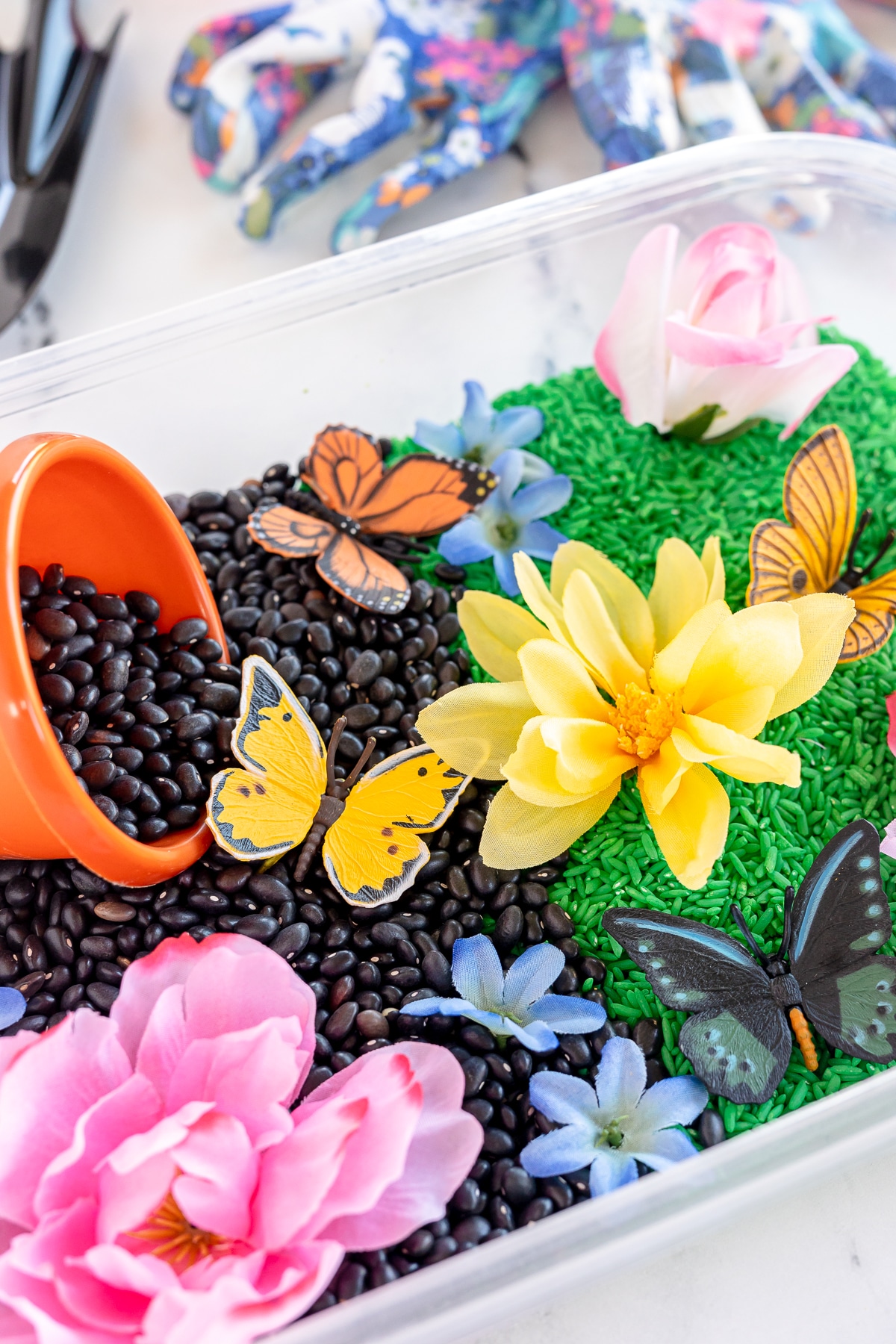
What Do You Fill Sensory Bins With?
Filling a sensory bin is simple! Mostly because you can add anything you want to a bin, as long as you’re willing to deal with any messes your little ones make. Popular sensory bin items are plain or colored rice, dry beans, water, sensory sand, popcorn kernels, wooden beads, water beads, and shaving cream. The possibilities are endless. There are some super fun ways to make your sensory bins themed for the holidays too.
Make a Vegetable Sensory Garden
Instead of adding plastic critters, add plastic vegetables that your little learners can play around with. Give them the same shovel and garden gloves and let them practice their green thumb while growing pretend crops. They will love creating their own veggie patch.
Do Sensory Bins Work?
Sensory bins are said to create a sense of calm, encourage social skills, and encourage kids to use pretend play. I have found that my kids are very focused while using them. They love experimenting with their sense of touch (the smooth rice, the bumpy beans, etc).
Are Dried Beans a Choking Hazard for Toddlers?
Yes! Dried beans and other small objects are a choking hazard for kids who put things into their mouths. Please keep this in mind when creating your bins. Either choose objects they can’t choke on or make sure they are past the phase of putting things in their mouth before letting them play with dry beans. With that being said, the best age to start sensory bins is ages 3 and up.
When Halloween rolls around, be sure to check out my Spooky Halloween Sensory Bin! The kids love it every year.
